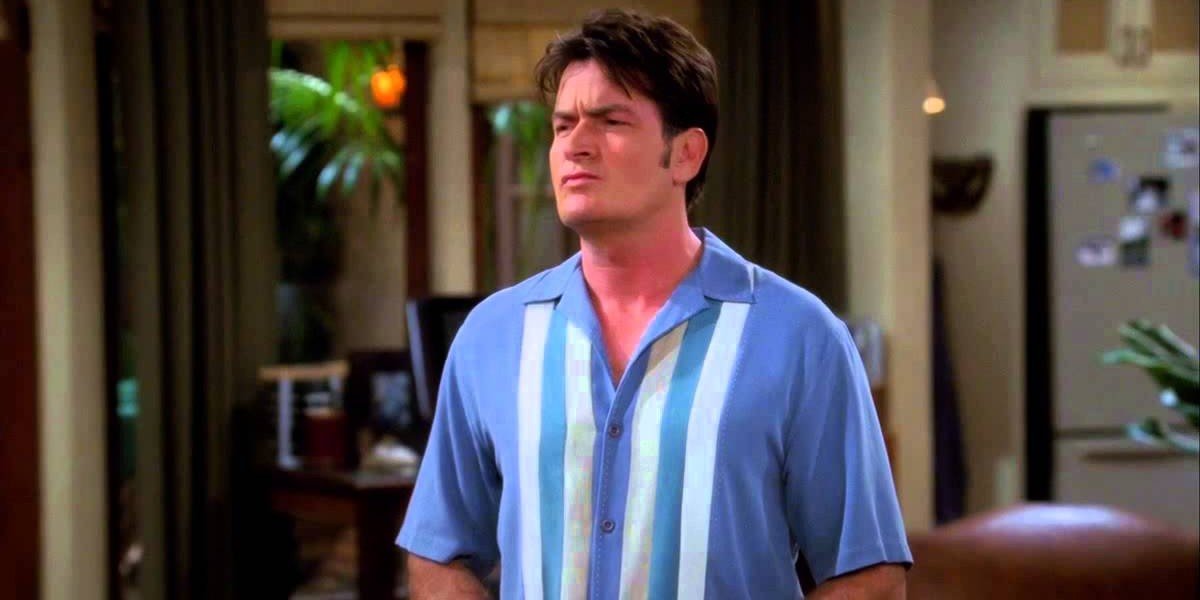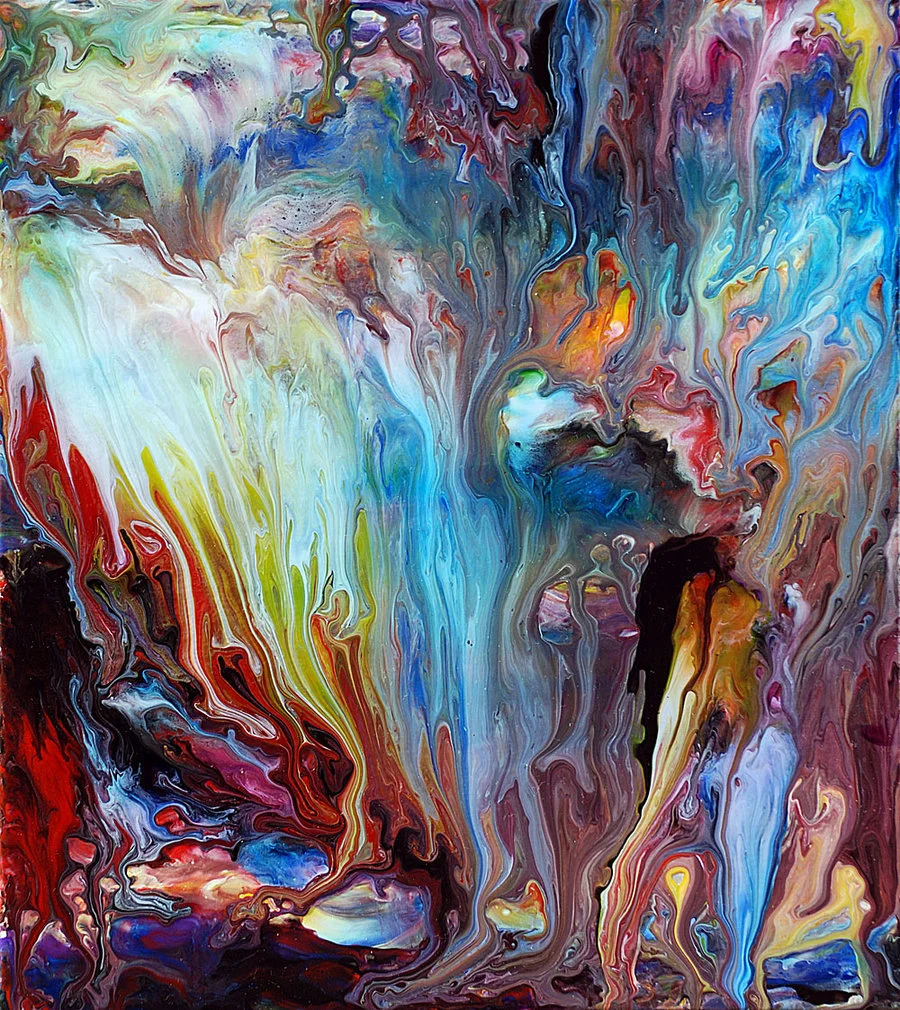
Alright, let’s get real for a second: art has a knack for stirring up trouble, especially when it wades into the murky waters of religion, sexuality, or violence. And honestly, isn’t that part of its charm? Some folks even argue that the best art *should* provoke, should make you squirm a little, should challenge your comfort zones. Of course, there’s a fine line between thought-provoking and just… well, *too much*, as anyone who’s ever tried to defend “The Human Centipede” trilogy knows. It’s a debate as old as time, or at least as old as movies that make you wonder if you should be calling your therapist.
Over the years, our collective tolerance for what’s considered “good taste” has been stretched, prodded, and sometimes outright shattered, particularly within the wild world of horror. This genre, by its very nature, aims to inflict a certain level of distress, to get under your skin and make you sleep with the lights on. Many directors have taken this mission to heart, pushing the boundaries of human discomfort to extreme lengths. Why do they do it? Maybe they just have a story burning inside them that *needs* to be told, no matter how grim. Maybe they’re trying to send a powerful, albeit unsettling, message. Or maybe, just maybe, it’s simply because they can, and they know we’ll probably still watch, if only out of morbid curiosity.
Now, some films, like “Cannibal Holocaust,” “Martyrs,” and “Salò, or the 120 Days of Sodom,” aren’t just pushing the envelope; they’re tearing it to shreds, setting it on fire, and dancing in the ashes. These aren’t just controversial; they often spark major backlash, land in ratings purgatory, or even get outright banned in various countries. A restrictive rating, like NC-17, can severely limit a film’s reach, essentially dooming it in certain markets. But here’s the kicker: sometimes, that infamous reputation only makes us more curious. We’re diving deep into some of the most genuinely disturbing movies ever made, films that truly earned their notorious reputations. Trust us, these aren’t your grandma’s scary movies, and for a few of them, we’re not even sure we *should* suggest you watch them. But if you do, don’t say we didn’t warn you!
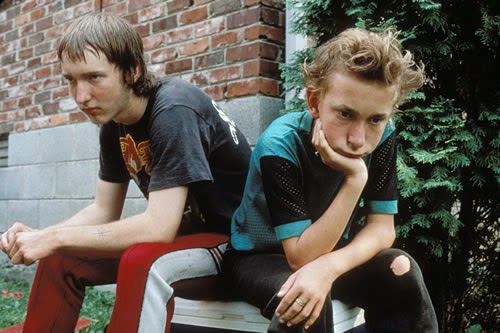
1. **Gummo**When we talk about disturbing films, it’s easy to jump straight to the supernatural or the utterly otherworldly, but director Harmony Korine’s 1997 debut, “Gummo,” reminds us that true horror can be found firmly planted in reality – albeit a bizarre and absurd reality. Set in Xenia, Ohio, a real-life town that’s seen its fair share of devastating tornadoes, the film immerses us in the aimless, often unsettling, lives of miscreant youth trying to survive in the wake of a particularly destructive twister. It’s not a movie with a neat, traditional plot; instead, it’s a fragmented, almost dreamlike journey through the mundane and the deeply disturbing.
“Gummo” quickly made waves upon its release, not for jump scares, but for its abrasive content. Audiences were confronted with scenes of animal abuse that were genuinely hard to watch, uncomfortable sexual themes that pushed boundaries, and violence that felt less like cinematic spectacle and more like a raw, unvarnished glimpse into a neglected corner of American life. The film’s disorganized storytelling perfectly mirrors the senseless existence of its young characters, whose roles, performed by child actors, often feel far too mature for their actual ages, adding another layer of discomfort.
What makes “Gummo” truly stick with you isn’t just the explicit content, but its unsettling portrayal of a forgotten, disturbing side of American life. It’s a film that suggests a reality for some that we’d rather not admit exists, making it tougher to swallow over time. It doesn’t rely on monsters or ghosts; its horror comes from the bleakness of its world and the casual depravity of its inhabitants, proving that the mundane can be the most terrifying thing of all. If you’re looking for something that just feels *wrong* in a profoundly human way, “Gummo” delivers.
Read more about: Beyond the Main Event: 9 Movies Where the Secondary Plot Absolutely Stole the Show
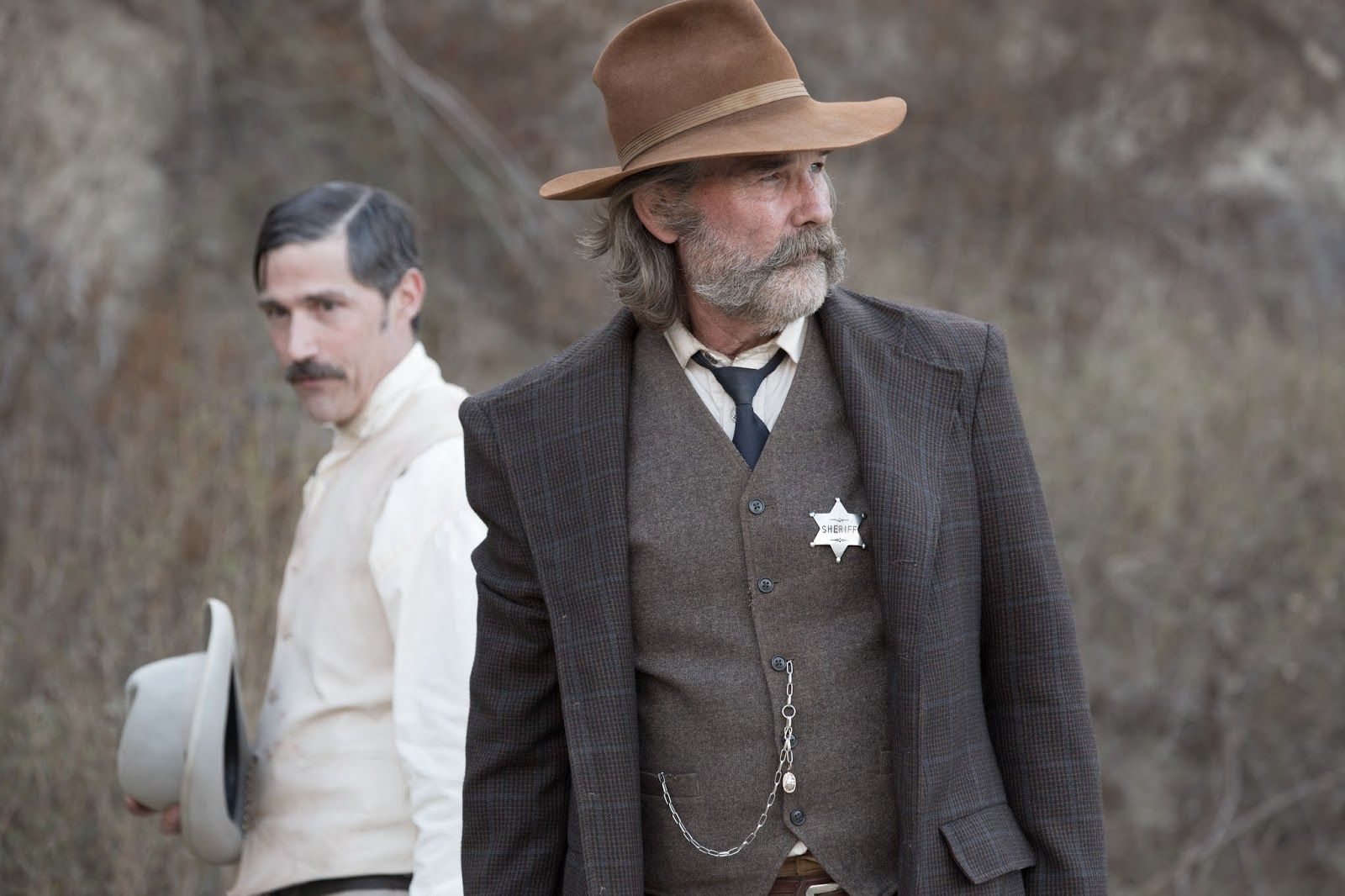
2. **Bone Tomahawk**Okay, so 2015 was a killer year for Westerns, with big hitters like “The Hateful Eight” and “The Revenant” dominating the conversation. But tucked away in that same year was “Bone Tomahawk,” a rare, gritty supernatural horror Western that put Kurt Russell back in a lawman’s boots, though this time in a far bleaker landscape. Russell plays Sheriff Franklin Hunt, whose town is plagued by kidnappings committed by a tribe of Indigenous cannibals. And trust us, from that premise, things only spiral into a blood-soaked nightmare.
This isn’t your typical shoot-em-up Western; it’s a decidedly bleak film that slowly ratchets up the tension and dread. The pursuit of the kidnappers leads Hunt and his posse into a violent, no-holds-barred confrontation with the people-eaters, where the stakes are life, death, and something far, far worse. The film has earned its infamous reputation largely due to its climax, which is, without mincing words, brutal. It’s the kind of scene that becomes legendary in horror circles for its sheer audacity and gut-wrenching depiction of violence.
Imagine this: one of Hunt’s captured posse members meets their end at the hands of their captors, naked, mutilated, and then ripped apart, all while the surviving members of the party are forced to watch. It’s a third act that doesn’t just push the film into the realm of horror; it slams it against the wall, leaving an indelible, sickening impression. “Bone Tomahawk” is a masterclass in slow-burn dread culminating in a moment so profoundly disturbing that it cements its place on any list of truly infamous movies. You’ll be thinking about that scene for a long, long time.
Read more about: Unlock the Secrets: Your Ultimate Guide to Pairing Wine with Beloved Comfort Foods

3. **Midsommar**If you’re a modern horror fan, you already know A24 has carved out a serious reputation for delivering some of the most uniquely unsettling films out there. And 2019’s “Midsommar” is a prime example of why. This isn’t your jump-scare haunted house flick; it’s a sun-drenched nightmare that plunges you headfirst into the bizarre inner workings of a fictional Scandinavian cult, proving that terror doesn’t need to hide in the dark. In fact, it’s often more disturbing when it’s happening under a perpetually bright sky.
The film follows a group of college students who, on the insistence of a friend, head to a remote part of Sweden to attend a unique cultural festival. Initially, everything seems idyllic, almost too perfect, especially with the sun barely setting. But as the festivities unfold, a sinister undercurrent slowly reveals itself. The first major red flag? Witnessing the ritualistic suicide of two elders, an event that sets the tone for the escalating weirdness. From there, things just keep getting stranger, with the fractured relationship between main characters Dani (Florence Pugh) and Christian (Jack Reynor) unraveling amidst the horrifying pagan rituals.
“Midsommar” earns its disturbing reputation through a relentless barrage of bizarrely sexual scenes, moments of shocking gore, and an omnipresent feeling that everything is profoundly, terrifyingly wrong. It’s a masterclass in psychological dread, where the horror isn’t just what you see, but the slow, agonizing realization of what’s truly happening and the deep psychological scars it leaves. This movie isn’t just disturbing; it’s an experience that burrows into your mind and stays there, making it one of the most unforgettable and infamous viewing experiences we’ve ever had.
Read more about: Hollywood’s New Guard: Unpacking the Rise of the Next-Gen A-Listers You Need to Know Now
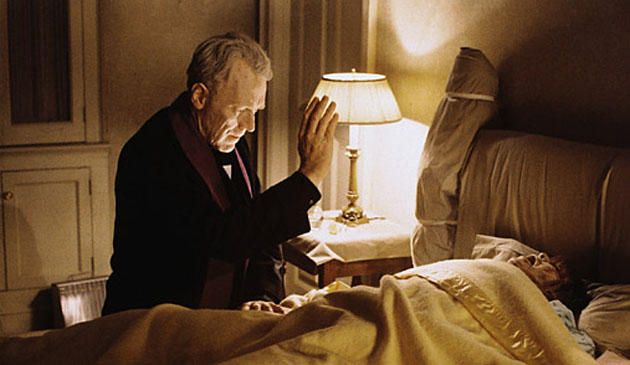
4. **The Exorcist**Honestly, what more can be said about “The Exorcist” that hasn’t already been etched into the annals of horror history? Now over fifty years old, this 1973 classic remains an absolute titan in the genre, remembered for absolutely terrifying audiences upon its initial release and solidifying its iconic status. It’s the harrowing tale of a young girl, Regan (Linda Blair), who succumbs to a mysterious, horrifying affliction. When modern medicine utterly fails, her desperate mother is forced to turn to an exorcist, who quickly realizes her daughter is possessed by a demon known as Pazuzu.
While some might argue that the film’s true disturbing power primarily hits those with religious leanings, at its core, “The Exorcist” is universally unsettling. It’s a story of an innocent child in mortal peril, and the desperate, deadly struggle of adults to save her. The film is absolutely rife with body horror, featuring now-iconic and deeply gruesome imagery: think Regan crawling backward down the stairs, or the infamous scene of her vomiting green sludge. These moments made, and continue to make, a profoundly gruesome impression that shocked viewers to their core.
“The Exorcist” might not possess the extreme explicit gore of some more modern horror offerings, but its enduring legacy is undeniable. Its grip on audiences, both then and now, speaks volumes about its power. It caused people to faint, vomit, and even experience mass hysteria in theaters back in the day, earning it an X certificate and condemnation from the Catholic Church. It’s a testament to how deeply it resonated, crafting a terrifying narrative that remains chillingly effective and utterly deserving of its infamous reputation, even as sensibilities have shifted over the decades.
Read more about: Beyond the Limelight: 11 Unforgettable Actors You Didn’t Realize We’ve Lost
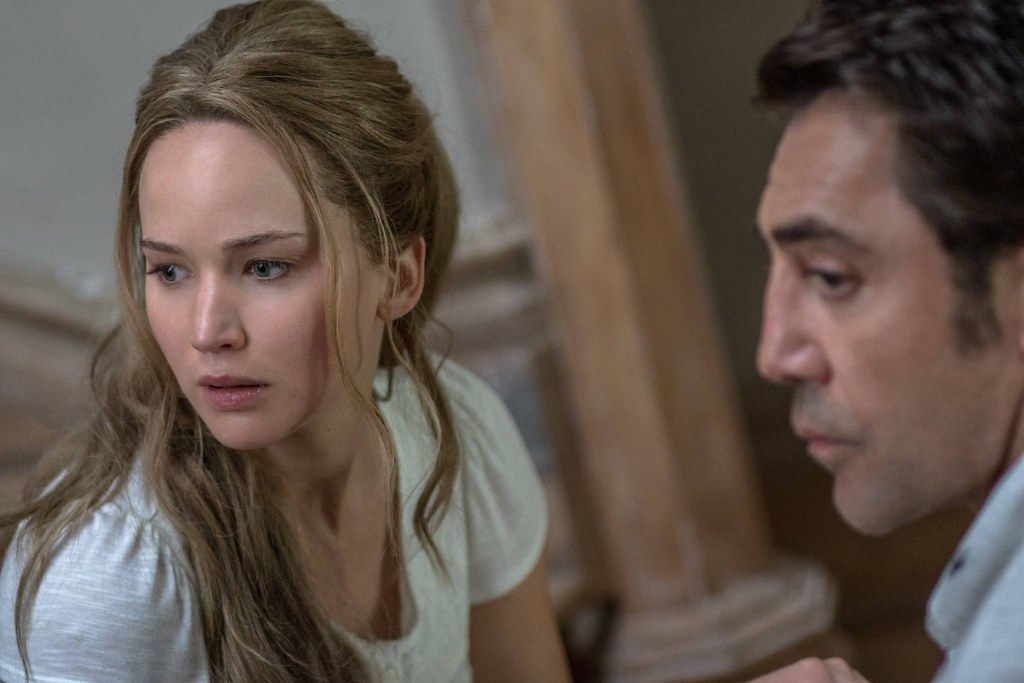
5. **Mother!**Darren Aronofsky’s “Mother!” is one of those films that defies easy categorization, largely defined by its audacious and polarizing style. Even its characters ditch names in favor of simple titles: Jennifer Lawrence is Mother, living with an author known as Him (Javier Bardem). Their shared home, which almost feels like a character itself, becomes the unsettling target of an unrelenting mob of strangers who just keep descending upon the property, slowly but surely turning a tense domestic drama into something far more chaotic and deeply disturbing.
What makes “Mother!” truly stand out in our collection is its unique blend of confusion and profound unease. It’s packed with symbolism, some overt, some more subtle, that initially makes the narrative feel like a fever dream. However, when the layers are peeled back and the allegorical details are fully explained, everything clicks into a disturbing, coherent whole. This wild, unconventional approach isn’t surprising when you consider Aronofsky’s filmography, which kicked off with the mind-bending mathematical thriller “Pi” back in 1998.
While “Pi” isn’t on this particular list, “Mother!” absolutely earns its spot among the most upsetting films out there, especially during its final, chaotic confrontation between Mother and the intruders. It’s a visceral, unsettling experience that confronts themes of creation, destruction, and sacrifice with a relentless intensity that left audiences polarized, bewildered, and deeply disturbed. This is a film that demands to be discussed, dissected, and debated, solidifying its infamous status not just for its content, but for its sheer, uncompromising artistic vision.
Read more about: Hilary Duff’s Incredible Evolution: From Disney Princess to Empowered Icon — A Head-Turning Transformation!

6. **Requiem for a Dream**Stepping away from the supernatural or overt gore, Darren Aronofsky’s 2000 masterpiece, “Requiem for a Dream,” delivers its disturbing punch through raw, unflinching realism. Set against the backdrop of New York City, the film intricately weaves together the lives of four individuals who, in parallel narratives, succumb to the crushing weight of substance abuse. We watch Jared Leto’s Harry Goldfarb, a drug dealer and user, desperately try to escape the grip of the product that consumes him, his best friend, and his partner, as their lives spiral out of control.
Simultaneously, Harry’s mother embarks on her own tragic path, becoming deeply addicted to amphetamine-laced diet pills in a desperate bid to look her best for a fleeting TV show appearance. What makes “Requiem for a Dream” so incredibly difficult to watch, perhaps more than any other film on this list, is its brutal honesty. It’s a visceral, heartbreaking dive headfirst into the world of addiction, painting a sobering, relentless picture of just how destructive it can become, especially for those who fall victim to its seductive, deceptive powers.
This film doesn’t need supernatural elements or buckets of blood to disturb you; its horror is purely human. It’s the slow, agonizing descent into despair, the erosion of hope, and the devastating consequences of chasing an elusive dream that makes it such an incredibly distressing watch for almost anyone. The film serves as a powerful, unsettling reminder of the very real, often hidden, horrors of addiction, ensuring its place as an infamous, gut-punching classic that leaves a lasting emotional scar. If you or anyone you know is struggling with addiction, help is always available.
Read more about: Beyond the Screen: 13 Chilling Horror Films You Won’t Believe Are Rooted in Real-Life Terrors

7. **The Road**Much like “Requiem for a Dream,” the disturbing power of “The Road” comes not from ghoulish monsters or jump scares, but from its relentlessly bleak and profoundly depressing tone. Based on a novel of the same name, this film immerses us in a post-apocalyptic world ravaged by an unnamed catastrophe, a world where the future of life on Earth seems almost certainly doomed. In this desolate landscape, a widower (Viggo Mortensen) desperately clings to the hope of finding a better life for himself and his young son.
But in the crumbling ruins of what was once society, only the truly evil seem to thrive. The father and son face an almost insurmountable threat from roving murderers and cannibalistic gangs, each encounter a stark reminder of how far humanity has fallen. While post-apocalyptic films are inherently depressing, “The Road” pushes beyond, never shying away from depicting the utter savagery and moral decay of its world. It’s a relentless portrayal of survival against impossible odds, where every glimmer of hope is quickly extinguished by stark, brutal reality.
Standout scenes, like when the father and son stumble across a squalid prison where cannibals are holding people as literal livestock, are what truly make “The Road” an unsettling, unforgettable experience. It’s a film that lingers long after the credits roll, its grim imagery and stark portrayal of human depravity cementing its infamous reputation. It’s a watch that will test your endurance and leave you with a profound sense of dread, proving that the most terrifying monsters are often the ones within us when civilization crumbles.
Alright, if you thought the first batch of films was intense, buckle up! We’re about to dive even deeper into the rabbit hole of horror, exploring seven more movies that have truly earned their infamous reputations. These aren’t just flicks; they’re experiences that challenge what you thought was possible on screen, leaving you with that unsettling feeling that only truly boundary-pushing cinema can provide. Prepare yourselves, because things are about to get even weirder, wilder, and more unsettling!
Read more about: John Wick’s 1969 Mustang: How a Classic Car Became a Cinematic Icon
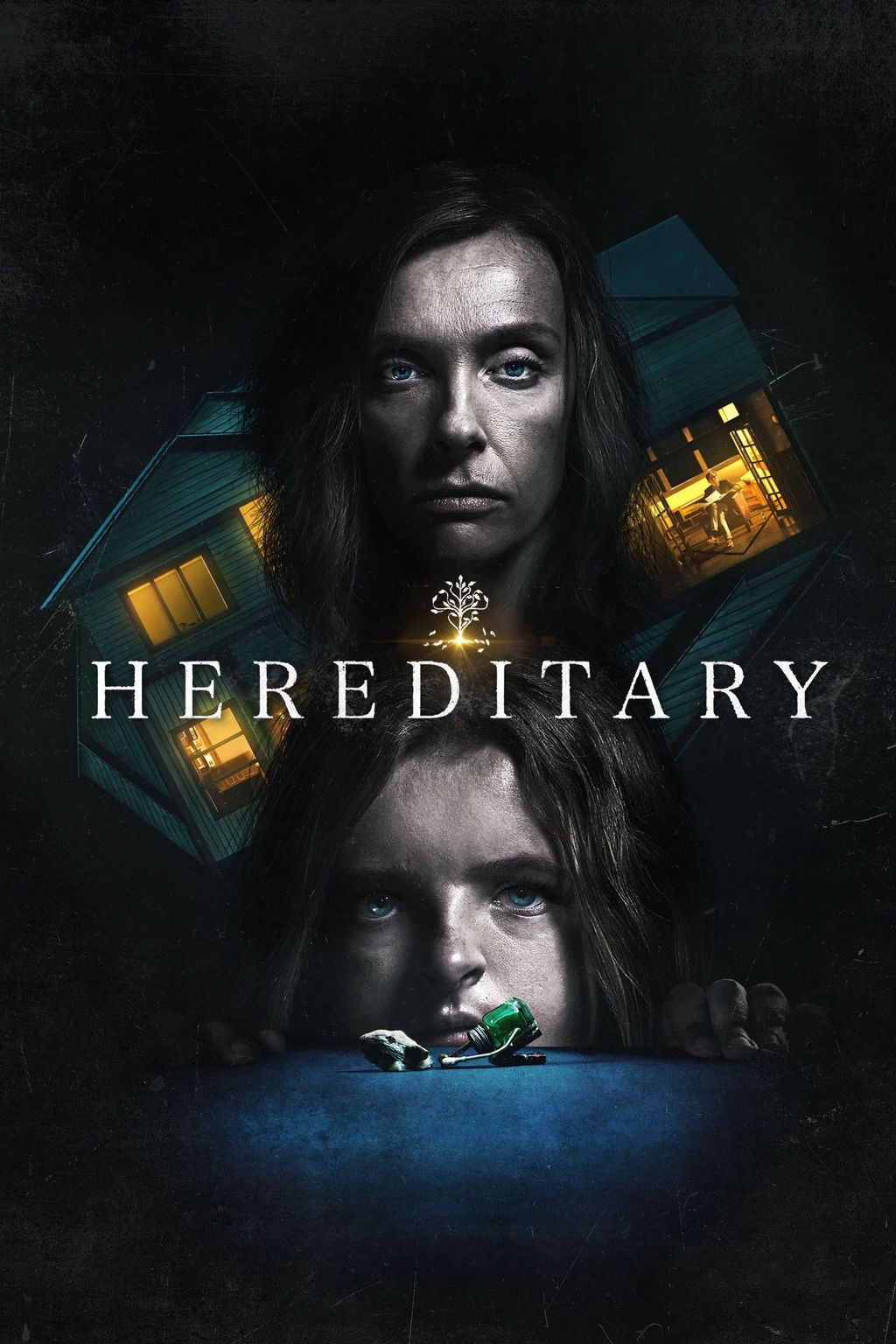
8. **Hereditary**Okay, so if you’re even a casual horror aficionado, you’ve probably heard the buzz around “Hereditary.” This gem from A24 has practically become a modern-day classic, consistently snagging spots on lists of the best horror films around. It kicks off with a double dose of tragedy for the Graham family: first, the passing of their enigmatic grandmother, Ellen, and then, the absolutely shocking and accidental death of the teenage Charlie. Talk about a rough start, right?
From there, the film just spirals into a terrifying journey through grief, where the family soon discovers that their suffering isn’t just bad luck. Oh no, something far deeper and more paranormal is actively working against them. “Hereditary” doesn’t just rely on its jump scares; it builds a visceral sense of dread with an unraveling mystery that suggests a family member might be the very source of their torment. That’s a twist that truly messes with your head!
Hailed for its top-notch performances, this film delivers a nightmarish story of modern-day witchcraft that sticks with you long after the credits roll. And here’s a fun fact, or maybe not-so-fun depending on your stomach: many didn’t even make it to the end, with the film famously making lists of movies audiences walked out of. If that doesn’t scream ‘infamous reputation,’ we don’t know what does!
Read more about: A Legacy Resonates: Irv Gotti, Hip-Hop Architect and Murder Inc. Co-Founder, Dies at 54

9. **Speak No Evil (2022)**Coming straight from the brilliant, albeit twisted, mind of Danish director Christian Tafdrup, “Speak No Evil” hit theaters in 2022 and quickly cemented itself as one of the most unsettling watches in recent memory. Heads up, there’s a 2024 American remake with a different ending, but trust us, the original Danish version is where the *real* disturbing magic happens. This one is a masterclass in escalating discomfort.
The premise sounds innocent enough: a Danish couple and their young daughter meet a friendly family while vacationing in Southern Europe. A polite, if slightly unusual, invitation to visit them in the Netherlands follows. Afraid of being rude (because, Scandinavians!), they make the trip, only to find themselves subjected to an increasingly bizarre and disconcerting visit that pushes their boundaries of tolerance to their absolute limit. You know that feeling when you’re being polite but everything is just *wrong*? This film personifies it.
It’s a slow burn of unease that culminates in a gut-punch of a final act. Our protagonists realize, far too late, that their host couple, and their mute son Abel, are hiding a truly sinister secret. The original Danish version earns its infamous status by being head and shoulders above its remake in the disturbing department. It’s a stark, unflinching look at social politeness gone horribly, devastatingly wrong, leaving you utterly speechless.
Read more about: Unmasking the Beasts: 14 Absolute Fastest Sleeper Sedans You Can Buy for Under $20,000

10. **Funny Games (1997)**There’s absolutely nothing funny about 1997’s “Funny Games,” another powerful foreign-language entry that will leave you cold. Set in Austria, the film brutally interrupts a family’s idyllic day with the arrival of two strangers at their doorstep. What starts as an uncomfortable overstaying of their welcome quickly escalates into a full-blown hostage situation, as the home invaders subject their captives to excruciating mental and physical torture. This isn’t your average home invasion flick; it’s something far more chilling.
But “Funny Games” isn’t just about extreme violence; it has a unique twist that sets it apart. And yes, we’re diving into spoiler territory here to explain its infamy. Unlike most horror films where there’s a chance for the protagonists to win, or even those with bleak endings, this film reveals that the captors are fundamentally incapable of losing. Why? Because they can literally rewind time if one of them is killed, essentially making them invincible.
This isn’t a sci-fi gimmick; it’s a deliberate, meta-commentary from the director on the audience’s relationship with violent cinema. That profound sense of hopelessness, combined with the truly cruel fate endured by the family, makes “Funny Games” a far more disturbing experience than its 2007 remake. It’s a film that forces you to confront your own complicity in watching violence, and that’s a truly uncomfortable place to be.
Read more about: Remembering the Luminaries: Celebrating the Lives and Legacies of the Stars We Lost
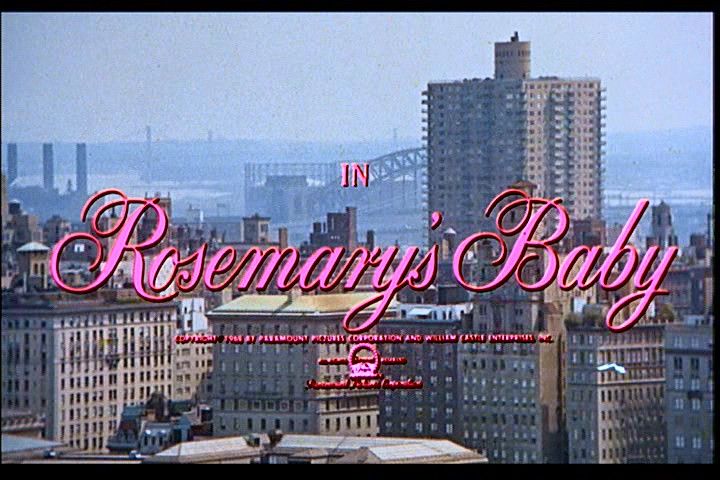
11. **Rosemary’s Baby**Stepping back in time a bit, we arrive at one of the earliest works from the legendary, and often controversial, filmmaker Roman Polanski: “Rosemary’s Baby.” This is an indisputable horror classic, primarily unfolding within the claustrophobic confines of a New York City apartment. Our heroine, Rosemary Woodhouse (played with chilling vulnerability by Mia Farrow), conceives a child with her husband, but remembers nothing of the act, instead hallucinating a demonic figure was involved. Talk about a bad dream that feels too real!
Rosemary’s pregnancy is then marred by a series of increasingly strange and upsetting events, all pointing to her terrifying hallucination being a living nightmare. Beyond the obvious disturbing elements of sexual violence and Satanic worship, the film’s true power lies in Rosemary’s agonizing spiral into paranoia. She becomes increasingly isolated, cut off from friends and even trustworthy doctors, her autonomy stripped away by everyone around her.
The pervasive themes of manipulation and a total violation of trust, coupled with the film’s undeniable allegory for abortion rights, elevate this 1968 classic beyond standard horror. It becomes a chilling, prescient watch that remains profoundly relevant decades later. Its infamous reputation is well-earned, not just for its subject matter, but for its masterful psychological torment.
Read more about: Beyond the Laughs: Meet John Candy’s Incredibly Talented Actor Kids and His Artistic, Private Wife

12. **Human Centipede (First Sequence)**Alright, prepare yourselves, because we’re entering the truly grisly part of our list with “The Human Centipede (First Sequence).” This film, and its subsequent sequels, have become absolutely infamous for their stomach-churning premise. Released in 2009, the first installment kicks off with three unsuspecting individuals falling victim to a mad scientist’s deranged kidnapping scheme. What he has in store for them is, well, something you definitely have to imagine because describing it fully would be… a lot.
His wicked experiment involves mutilating the trio and surgically connecting them from front to back, turning them into a single, horrifying digestive system. From there, they’re trapped in a desperate struggle to survive under the rule of their demented captor, who systematically attempts to strip them of any remaining shred of humanity. The film earned its notorious reputation not for its intricate plot or deep character development, but for its sheer audacity in depicting such a grotesque concept.
Let’s be real, the less-than-stellar reviews this series has received over the years are pretty telling. Many still debate whether these films have *any* artistic merit, while others strangely champion them as underrated horror. But if your idea of a good time is a gross-out flick designed solely to push the boundaries of what you thought you could stomach, then “The Human Centipede” definitely delivers on its promise of unforgettable, infamous discomfort.
Read more about: 13 Terrifying Horror Movies That Will Keep You Up All Night

13. **Henry: Portrait of a Serial Killer**If you’re looking for a whirlwind of pure, unadulterated violence, then “Henry: Portrait of a Serial Killer” is your movie. This 1986 film was a stark, brutal departure from the more fantastical slashers that dominated the decade, like “A Nightmare on Elm Street” or “Friday the 13th.” Instead of supernatural boogeymen, audiences were met with something far more grounded and, frankly, much harder to sit through: a chillingly realistic portrayal of a serial murderer.
The film chronicles the wanton reign of terror of a local drifter named Henry (played by Michael Rooker, who you might know from “The Walking Dead” and “Guardians of the Galaxy” much later). Inspired by the real-life serial killer Henry Lee Lucas, the film follows Henry as he travels around Chicago with another ex-con, committing heinous and utterly random acts of violence against strangers. It’s gritty, it’s raw, and it’s deeply unsettling because it feels so terrifyingly real.
Thanks to its extremely disturbing content, “Henry” faced significant hurdles getting to theaters, including substantial censorship by the BBFC in the United Kingdom. They even had to completely alter one scene depicting Henry’s graphic murder of a woman, which speaks volumes about just how unsettling it was to viewers. This film isn’t just a slasher; it’s a grim, unflinching look into the mind of a killer that earned its infamous reputation through sheer, uncompromising realism.
Read more about: Unmasking the Monsters: The 15 Most Convincing Psychopaths in Film History

14. **A Serbian Film**And here we are, at the very pinnacle of our list, the film that pushes far beyond what most audiences can even begin to stomach: “A Serbian Film.” This movie grabs the number one spot for the most twisted and disturbing film ever committed to screen. It follows Milos (Srdan Todorovic), a former adult film star lured into what he believes is one final lucrative, non-pornographic project by a deviant director. Oh, how terribly wrong he is.
Milos soon realizes, far too late, that he’s been cast in an explicit film featuring the most depraved content imaginable, plunging him into a nightmare of horrific acts. While many films with extreme violence or sexual imagery face censorship, few have been met with the widespread scrutiny and outright bans that befell “A Serbian Film” upon its release. It’s controversial on a whole new level.
Though the director has claimed its extreme content serves a deeper message about the Serbian government’s amoral control, that argument largely fell flat with censors. According to horror magazine Fangoria, the uncut version of the film was banned in at least 46 countries, a lasting testament to just how objectionable its content is. It truly earns its title as the most disturbing film committed to celluloid, a harrowing experience that has burned itself into the collective memory of horror fans (and non-fans alike).
Read more about: Tesla Ownership: Avoiding Costly Pitfalls That Could Drain Your Wallet and Your Patience
So there you have it, folks! Our journey through some of the most genuinely infamous horror movies ever made. From films that made audiences squirm with psychological dread to those that ignited international bans for their sheer audacity, these movies have all carved out a special, albeit unsettling, place in cinema history. They’ve proven time and again that the horror genre is a powerful, provocative beast, always ready to challenge our limits and reflect the darkest corners of human experience. Whether you dare to watch them or simply marvel at their notoriety, these films undoubtedly leave a mark. Now, if you’ll excuse us, we might need a palette cleanser… maybe a rom-com, or a puppy video. Anything but more screaming, please!”


